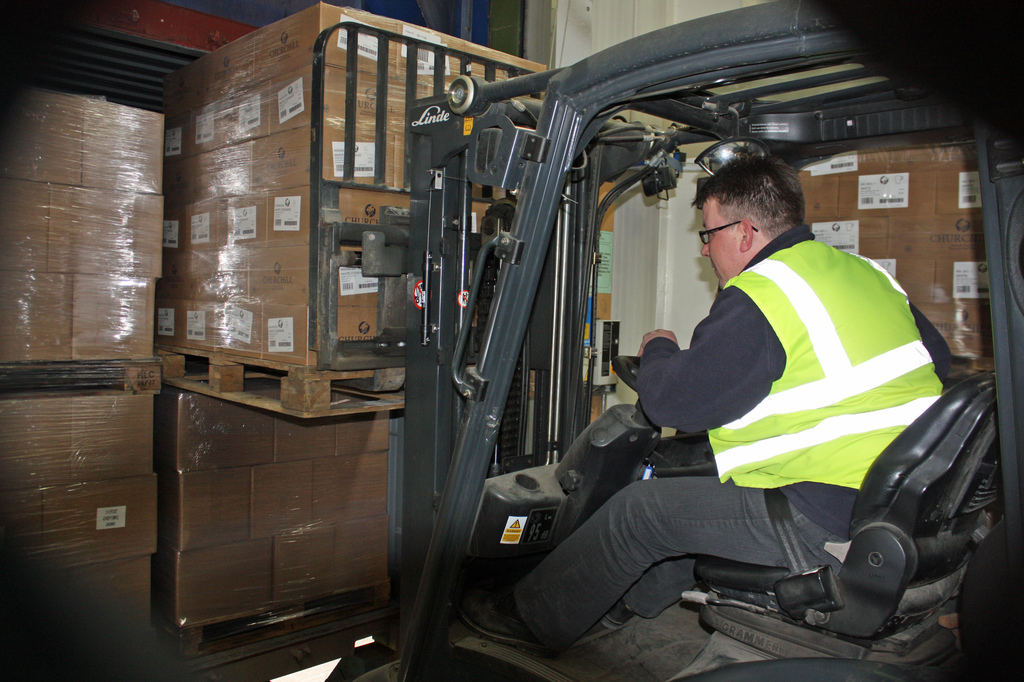Forklift trucks are dangerous. Every day people are injured while working on or near to forklift trucks, and sadly these injuries can be serious and even fatal.
One contributing factor to accidents involving forklift trucks is that truck operators often don't have a sufficient view of the forks to be fully in control of their position.
This problem is exacerbated when operating at higher lift heights, when stacking pallets or working in racking systems. This is not the fault of the driver and no amount of training can eliminate the problem. Instead operators often find ways to work around the problem, typically:
• Guessing the required tilt angle, and then use the tilt and lift controls to make multiple adjustments when entering the load
• Leaning out of the cab to try to get a better view of the forks
• Asking a colleague to act as a ‘spotter’, standing to the side and instructing the operator on the required tilt angle.
Tests have shown that drivers have a less than 10 percent chance of getting the forks level first time. Under observation you can see that they need to make numerous adjustments of the tilt and lift controls when entering loads. This takes skill and concentration, and hence it is prone to error. While drivers are concentrating on making these adjustments, they are less aware of what is happening around them.
Leaning out of the cab to get a better view should be discouraged. The cab is there to form a safety zone, putting the most fragile part of the body outside of the safety zone is asking for trouble. No pedestrians should be anywhere near to a forklift during operation. Asking a colleague to stand within the work area to provide visual feedback is putting them in unnecessary danger.
The solution
AEC Designs is marketing a mast tilt indicator that can be easily installed to all makes of forklift truck. Called ‘ForkAngles’, the device is said to show clearly at what angle the forks are set.
"With ForkAngles, even an inexperienced driver can set the forks level – first time - every time”, says designer, Antony Cook. "It reduces risk by eliminating guess work. There is no need to lean out of the safety zone, and drivers can operate alone with greater confidence and efficiency.”
Customer trials: Churchill China, Stoke on Trent: "When loading pallets into an international shipping container, we aim to maximise the load density,” explains Churchill China, despatch warehouse manager, Dave Cadman.
"This means that you are working in a very tight space. Loading the bottom layer is fairly straightforward but when it comes to the next level – the space allowed for the top pallet is very confined. The fork lift driver must take great care to ensure that the load goes in perfectly level.
Without any form of visual indicator it is difficult to judge the load angle – even with lighting. To improve accuracy, a second person would normally be required to guide the loading operation.
"If they get it wrong – it will result in damage to both pallets. Too much back tilt will damage the front edge of the base pallet and/or the leading face of the upper pallet. Too much forward tilt, will impact the back edge of the upper pallet and front edge again on the lower pallet.
Dave Cadman continues. "By using the ‘ForkAngles’ mast tilt indicator, the operators can work alone and with confidence that the load will go in precisely – and without causing any damage to either pallet. As well as eradicating this risk and the potential costs in terms of delay and repairs, the indicator also helps to improve productivity.
"We don’t need the load supervisor and the truck operators are happier. They know that they can press on without causing any damage to the goods. The job can be completed without any complications, and we are all confident that the goods will be loaded safely and in good condition for shipping to the customer.”
Following successful trials at its main despatch warehouse in Tunstall, Churchill China is planning to equip additional trucks with the ‘ForkAngles’ indicators.




